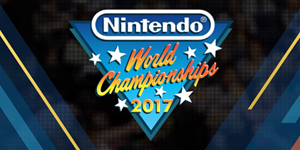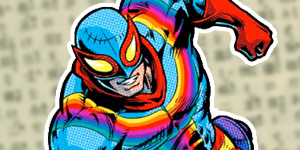Extra: Nintendo’s Forgotten Handheld
When Nintendo launches a new system, it’s exciting. When Nintendo launches two systems within six months, it’s even more exciting. When they launch three systems within six months — wait, three systems? Yes, it actually happened in 2001. The year that brought us the Game Boy Advance and the GameCube also gave us one other handheld: the Pokemon Mini, a very small and short-lived system that was available exclusively at Pokemon Center stores. It had games on cartridges, it had multiplayer support, and it still has a Nintendo.com support page. The Pokemon Mini was a bona fide Nintendo console that has become nothing more than a tiny memory and a teensy footnote in gaming history. Here’s a look, with photos below, at the little system that time forgot.
The Pokemon Mini made its debut at the Pokemon Center store in New York City (now Nintendo World) on November 16, 2001, following up on the success of the similarly sized Pocket Pikachu virtual pets and the previous year’s launch of Pokemon Gold & Silver. In other words, it was released at the height of Pokemon mania. In North America, the system was only available through the Pokemon Center. The launches that followed in Japan on December 14, 2001, and Europe on March 15, 2002 saw equally limited purchasing opportunities. Across all three regions, the handheld was available in three Pokemon-themed colors: Wooper Blue, Smoochum Purple, and Chikorita Green.
Roughly the size of an original Game Boy game cartridge, the Pokemon Mini was an interesting mix of ideas crammed into an impressively small body. It offered features such as force feedback, a shock detector for rudimentary motion controls (the only real motion it detected was shaking), an infrared port for multiplayer gaming, a built-in clock, and a save state option in lieu of a pause button. At any time, pressing the system’s centrally located power button would put the system into sleep mode. Press it again and the inserted game would pick up right where it left off. The cartridge slot also featured a lock mechanism that ensured games wouldn’t fly out when violently shaking the system or just tossing it in a bag.
Of course, there were also some limitations due to the system’s small size. Most notable was the black and white LCD screen. Granted, it was crisp and clear, but after years of Game Boy Color and the Game Boy Advance’s release six months prior, it felt a bit odd to go back to the two-tone era. The small size also kept its sound capabilities to a minimum. Specifically, the only sounds it outputted were the bleeps and bloops of Nintendo’s old Game & Watch devices.
Luckily, all the games accommodated these restrictions. The developers did not try to shoehorn complicated gaming experiences into the inch-wide Pokemon Mini cartridges, instead choosing to create brief pick-up-and-play experiences. A prime example of this was Pokemon Party Mini, a compilation of seven minigames that came bundled with the system. Much like how WarioWare demonstrates the capabilities of each system it is on, Pokemon Party Mini used many of its scoreboard-based minigames to show off different Pokemon Mini hardware features. For example, the “Bellossom’s Dance” minigame required player to either press a button or shake the system in time with the music, and “Hitmonchan’s Boxing” relied on players to shake the system to throw punches. Similarly, the “Sneasel’s Fake Out” minigame utilized the infrared port for a multiplayer game of chance that mixed Pokemon, basketball, and rock-paper-scissors, while “Celebi’s Clock” hooked into the system’s real-time clock to offer stopwatch and alarm capabilities. Other minigames stuck with buttons and featured tasks such as dribbling a soccer ball as Chansey, judging if a tennis ball is out of bounds as Slowking, and running a footrace as Pikachu.
In addition to Pokemon Party Mini, three other games were available for the Pokemon Mini when it launched. Pokemon Pinball Mini provided a unique spin on pinball, tasking players with catching Pokemon by landing the Pokeball pinball into all the holes on the table. Pokemon Puzzle Collection offered four different puzzle games, including modes that require players to unscramble or piece together images and shapes to form Pokemon, as well as a Rescue Mission mode in which blocks must be moved to free a Pokemon trapped in a maze. The last launch title, Pokemon Zany Cards, was a bit slower paced, but still offered plenty of variety with four different card games and multiplayer support.
Unfortunately for North America, the list of Pokemon Mini game releases stopped there. No additional titles were released here after the system’s launch, but other regions did receive more games. Both Europe and Japan got a special version of Tetris appropriately titled Pokemon Tetris. It offered the standard variety of Tetris modes, but with a twist of unlocking new Pokemon for the in-game Pokedex whenever four or more lines were cleared. Japan then went on to receive an additional five games: a sequel to Pokemon Puzzle Collection, a new minigame compilation starring the Pichu Brothers, a side-scrolling racing game not so cleverly named Pokemon Race Mini, a Tamagotcih-esque Pokemon raising game titled Pokemon Breeder Mini, and a Kirby Tilt ‘n’ Tumble-style adventure game called Togepi’s Great Adventure.
Yet even with these extra games, the Pokemon Mini was as good as dead worldwide within a year. Togepi’s Great Adventure was the last game to be released and that was only ten months into the handheld’s existence. However, in some ways, the Pokemon Mini has lived on. A virtual version can be found in Pokemon Channel for GameCube, letting players try out a handful of Pokemon Mini games. Additionally, hackers and developers have embraced the system to create homebrew titles and translate the games that never made it out of Japan. It’s also still possible to find Pokemon Mini handhelds online for reasonable prices.
Because of its brief life and limited library, it’s easy to forget the Pokemon Mini. Hopefully this article and the below photos of the hardware, games, and launch accessories help to shed a little light on this overlooked piece of Nintendo history.
























thats a great read!